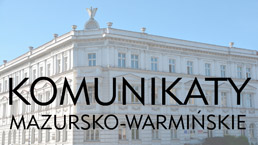W opracowaniu
Aktualny numer
Numery specjalne
Archiwum
O czasopiśmie
Redakcja
Rada Redakcyjna
Recenzenci
Instrukcja redakcyjna
Zasady etyki publikacyjnej
Zasady recenzowania
Ghostwriting
Prawa autorskie i polityka Open Access
Klauzula informacyjna RODO – dla autorów artykułów zgłoszonych do publikacji w kwartalniku „Komunikaty Mazursko-Warmińskie”
Kontakt
Cennik
PROJEKTY
Traktat francusko-perski jako przykład działań dyplomatycznych Napoleona w okresie pobytu w Kamieńcu Suskim
Data publikacji online: 07-07-2015
Data publikacji: 08-07-2015
KMW 2015;288(2):183-199
SŁOWA KLUCZOWE
DZIEDZINY
STRESZCZENIE
The stay of emperor Napoleon in Finckenstein (Kamieniec Suski, district Iława) from 1st April till 6th
June 1807 was rich in many important undertakings. Napoleon, involved in the war operations against the forces of 4th coalition, undertook the diplomatic steps, the result of which could be the lightening of the military effort of the Great Army.
Undersigning the treaty was preceded by long time of sending the envoys with the letters. In winter
1804 Shah of Persia asked the French government for the support in his fight against Russia. As early as in
March 1805 Napoleon sent to Teheran two trustworthy envoys. Next letters he sent by the couriers from Warsaw, Ostróda (Osterode) and Kamieniec Suski (Finckenstein).
The authors carry out the analysis of the allied French – Persian treaty signed in the palace of Finckenstein on 4th May 1807. The treaty corresponded to the reciprocal interests of the negotiating parts. The Persian
Shah Fath Ali was specially interested in modernization of the army and in gaining over an ally to the war against Russia, which started in 1804. Napoleon in these needs saw the chance of creating the diversion front against the armies of tsar Alexander I and of widening the continental blockade of England outside Europe. Besides the analysis of the treaty, the authors described the visit of the “exotic” legation in the palace of Finckenstein. Thanks to Napoleon art of propaganda and the tradition cultivated by the owners of the palace – the counts zu Dohna, this episode was kept in the local memory till 1945.
Przetwarzamy dane osobowe zbierane podczas odwiedzania serwisu. Realizacja funkcji pozyskiwania informacji o użytkownikach i ich zachowaniu odbywa się poprzez dobrowolnie wprowadzone w formularzach informacje oraz zapisywanie w urządzeniach końcowych plików cookies (tzw. ciasteczka). Dane, w tym pliki cookies, wykorzystywane są w celu realizacji usług, zapewnienia wygodnego korzystania ze strony oraz w celu monitorowania ruchu zgodnie z Polityką prywatności. Dane są także zbierane i przetwarzane przez narzędzie Google Analytics (więcej).
Możesz zmienić ustawienia cookies w swojej przeglądarce. Ograniczenie stosowania plików cookies w konfiguracji przeglądarki może wpłynąć na niektóre funkcjonalności dostępne na stronie.
Możesz zmienić ustawienia cookies w swojej przeglądarce. Ograniczenie stosowania plików cookies w konfiguracji przeglądarki może wpłynąć na niektóre funkcjonalności dostępne na stronie.




